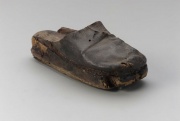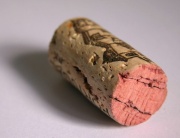Cork
Description
1) A lightweight, elastic outer bark of the Cork oak, Quercus suber, native to the Mediterranean region. Cork trees are cultivated in Spain, Portugal, France, Italy, Morocco, Tunisia, and Algeria. The outer bark is stripped about every 10 years. It contains 35-60% Suberin, 30-33% Cellulose, 27-32% Lignin with small amounts of Wax, [fat|fats]], and salts. Cork has been used to seal wine bottles since antiquity. It is currently used for insulation, floats, acoustical wall covering, flooring, shoe soles, gaskets, handles and bottle stoppers.
2) An archaic term for the blue dye extracted from Lichen.
Synonyms and Related Terms
1) Quercus suber; Kork (Deut.); liège (Fr.); kurk (Ned.); cortiça (Port.); kork (Sven.)
Other Properties
Unaffected by water, brine, dilute acids, alcohols, or oils. Attacked by concentrated mineral acids, strong alkalis and ozone.
| Density | 0.10-0.25 |
|---|
Sources Checked for Data in Record
- G.S.Brady, Materials Handbook, McGraw-Hill Book Co., New York, 1971 Comment: p. 238
- Mary-Lou Florian, Dale Paul Kronkright, Ruth E. Norton, The Conservation of Artifacts Made from Plant Materials, The Getty Conservation Institute, Los Angeles, 1990
- R.D. Harley, Artists' Pigments c. 1600-1835, Butterworth Scientific, London, 1982
- Dictionary of Building Preservation, Ward Bucher, ed., John Wiley & Sons, Inc., New York City, 1996
- Thomas C. Jester (ed.), Twentieth-Century Building Materials, McGraw-Hill Companies, Washington DC, 1995
- Wikipedia, the free encyclopedia, at http://www.wikipedia.com Comment: http://en.wikipedia.org/wiki/Cork_%28material%29 (Accessed Jan. 15, 2006)
- CRC Handbook of Chemistry and Physics, Robert Weast (ed.), CRC Press, Boca Raton, Florida, v. 61, 1980 Comment: density=0.22-0.26

